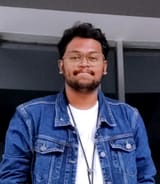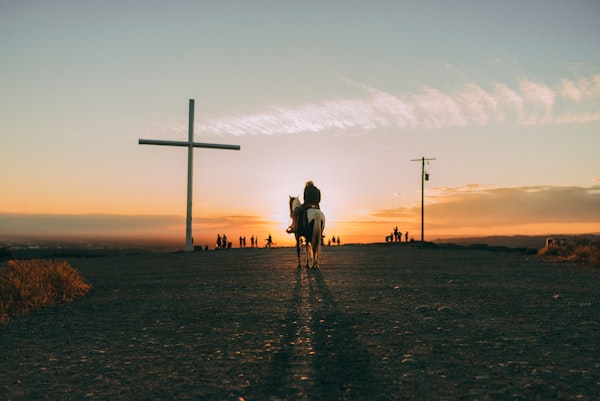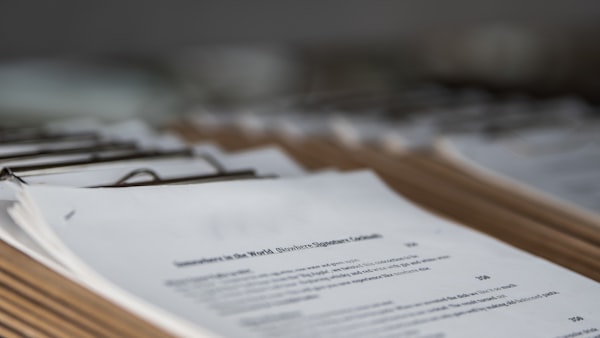Day 21
Writing is a skill. In here I send notes of my writing from the 50 days of writing course by David Perell, to reflect, develop and build my writing style.

In the 21st email from the 50 days of writing course by David Perell, he mentions something along the lines of it is okay to not be original.
David mentions Derek Sivers's strategy where he assumes himself as below average. This is what Derek says -
To assume you’re below average is to admit you’re still learning. You focus on what you need to improve, not your past accomplishments - Derek Sivers
As a writer, your challenge is to look in places where nobody else is looking, so you can find worthy ideas that are hidden in plain sight.
As a reference to how it is okay to take ideas from others and build on top of them is okay. David further mentions what it is to imitate -
In Shakespeare’s time, the word “ape” meant both “primate” and “to imitate.” The philosopher Rene Girard argued that humans are giant imitation machines and Harvard anthropologist Joseph Henrich even argues that our imitative capacities are the “secret of our success.” The urge to copy is in our DNA.
My thoughts:
I think imitation is a big deal when learning traditionally, for example in schools it is wrong to copy others and that is because it encourages plagiarism. Plagiarism is copying exactly what is written in the work of others. Learning is reflecting on the work of others and improving on it.
I can give you two examples to explain how learning and improving others' work is a good thing.
- Tesla opened their patent to imitate and build a better world to live by decreasing carbon
- This article by Smithsonian magazine is on how Japan is reinventing America's best bourbon. In the article, there is a piece that says -
There’s something about the perspective of the Japanese that allows them to home in on the essential elements of foreign cultures and then perfectly recreate them at home. “What we see in Japan, in a wide range of pursuits, is a focus on mastery,” says Sarah Kovner, who teaches Japanese history at the University of Florida. “It’s true in traditional arts, it’s true of young people who dress up in Harajuku, it’s true of restaurateurs all over Japan.” - Source: Smithsonian Magazine.
Tesla's method of learning that actually works:
Tesla open-sourced their patent only to accelerate its mission of sustainable transport. In 2014, Elon Musk published a blog post explaining why they are open-sourcing the patent and they were right the whole time.
They believed that patents needed to be created in order to protect themselves from big companies copying their work and overwhelming Tesla. Later, Elon addresses how the market of Electric Vehicles from the Big manufacturers is non-existent ( close to 1%).
Tesla saw an unbelievable task ahead of them as there are 2 billion cars and only 100 million of them are EVs, it is a huge hurdle to combat the carbon crisis.
We believe that Tesla, other companies making electric cars, and the world would all benefit from a common, rapidly-evolving technology platform - Elon Musk
Tesla made a huge bet by open-sourcing and believing it will strengthen the position of Tesla while solving the carbon crisis and cut to 2021, we all know it's the top-performing company with overall business crossing a 1 trillion market cap.
The only takeaway I had from this post was how effective learning must be which brings a lot of people with you to learn and make a difference.
Here's an article from Bloomberg which explains how Tesla surpassed the whole Energy Market that you can check out how well the plan of open-sourcing the patent worked out.
Want to drink the best American Bourbon - Visit Japan:
Smithsonian Magazine published an article in 2014 "How Japan Copied American Culture and Made it Better" - In the article, they mention how Japan is mastering every forgotten Idea and making them impeccable.
Tom Downey, the writer of the article - mentions how he went to Osaka and headed to Rogin's Tavern, a bourbon bar contended by his friend that it is the best Bourbon he ever tasted. He reached the place and saw nearly every bottle is bourbon, though there is a smattering of rye and sour mash. He sees bottles from the 1800s next to obscure export bottlings of Jim Beam next to standard-issue Jack Daniel’s. Later an elderly man by the name of Seiichiro Tatsumi, dressed in a bartender's attire comes close and asks shall we taste bourbon from 1904(🤯)? After tasting it, Tom had the first thought to ask Tatsumi how did he find these.
This is what Tatsumi replied -
“I tasted my first bourbon in the basement bar of the Rihga Royal Hotel, a famous old place in Osaka,” Tatsumi says. “Then I spent years reading everything I could about bourbon at the American cultural center. I sent letters to Kentucky and Tennessee trying to set up visits to the distilleries. I even asked for help at the American consulate. And then I finally got to visit in 1984. I fell in love with America then. I’ve been back a hundred times since. I now own a house in Lexington, and I’ve even been named a colonel in Kentucky.”
I (Tom) ask him how he found all these old bottles of bourbon. “I drive across America, only on the back roads and especially at night, when you can see the lit-up liquor-store signs in the distance,” he says. “I stop at every place I pass, and I don’t just look on the shelves: I ask the clerk to comb the cellar and check the storeroom for anything old. I can’t tell you how many cases of ancient bottles I’ve found that way. I’ll try any bourbon once, and if I like it I buy more.”
This way Seiichiro bought home a collection of bourbons and mastered the art of bourbons with its antique bottles and the taste itself.
Bourbon is not the only one Japanese have imitated and perfected. Japanese are known for their focused mastery. They will make observations from the world and improve it for the better.
Do read more examples from this article to know more about how Japanese are masters at improving things for the better just by observing.
My main takeaways -
- Don't be afraid to show your work
- Copying exactly the same thing is Plagiarism while building and making the existing idea is Innovation.
- Whenever taking ideas from someone - do mention their work. It is a basic rule in the online world to appreciate their efforts.
- Last but the most important of all, Do observe a lot, take notes and reinvent.
Thank you for reading.
For more of Perell's work, you can signup for the 50 Days of Writing Course by clicking and signing up to receive one mail every day with an amazing take on writing.
Sponsor:
Morning Brew
You can get access to the latest news, exciting articles, and some puzzles just like a newspaper but digitally and these all come directly to your inbox.
I get a few of my articles that I read from them. I highly recommend giving the Morning Brew newsletter a try. It's an awesome daily email that delivers the top business, marketing, and tech among a few news in a way that's informative and entertaining. Best of all, it's free and only takes 5 minutes to read each morning.
Do subscribe for fresh, amazingly written, and insightful news there is at Morning Brew.




